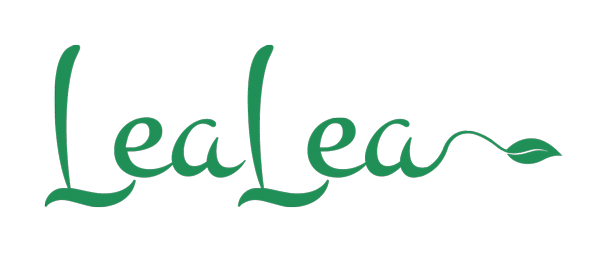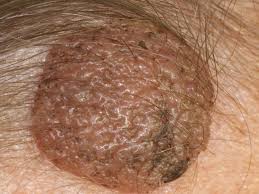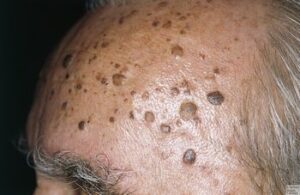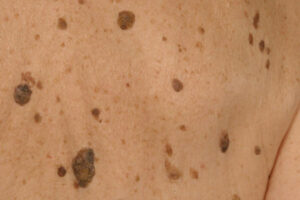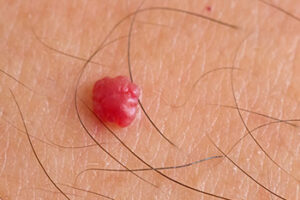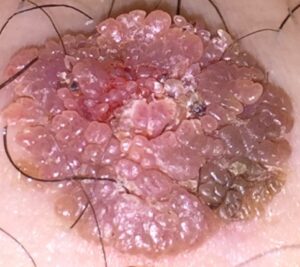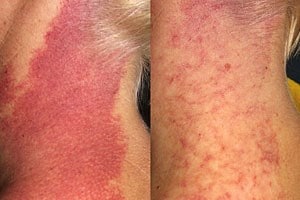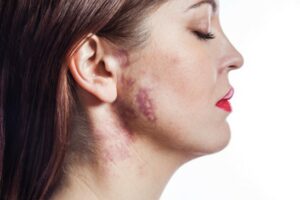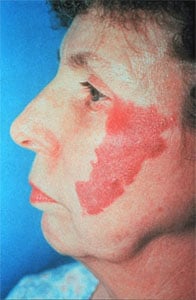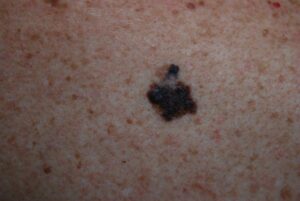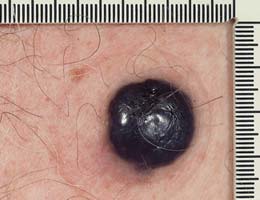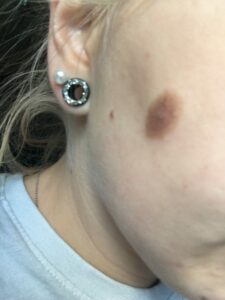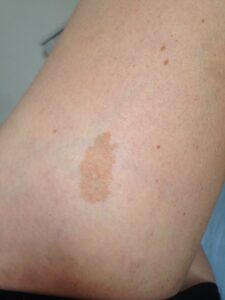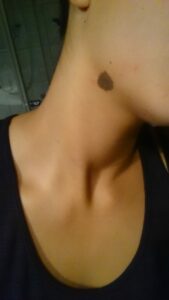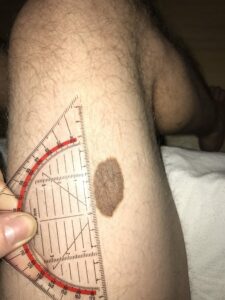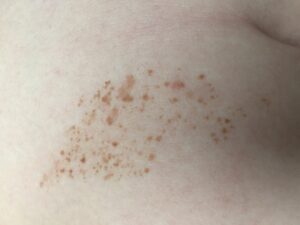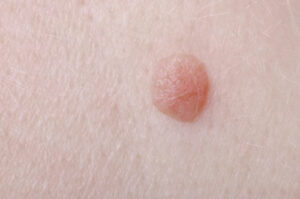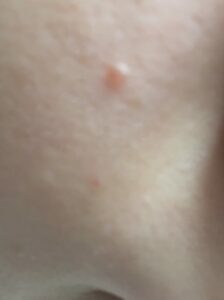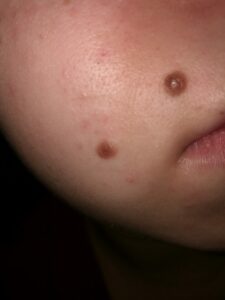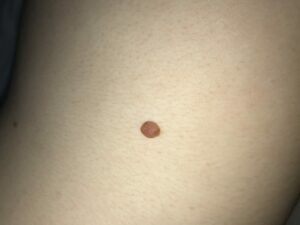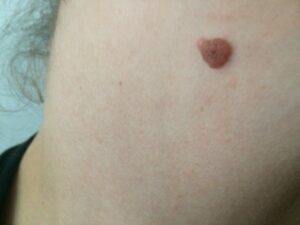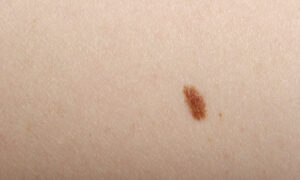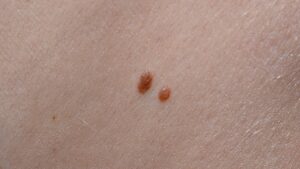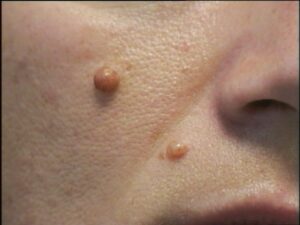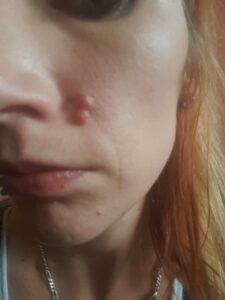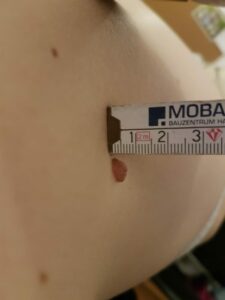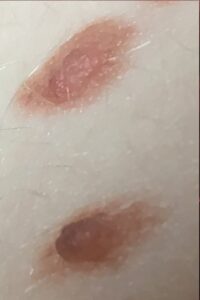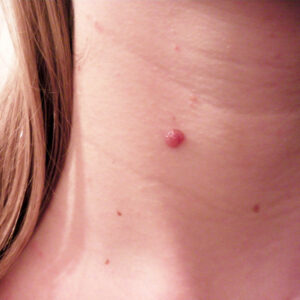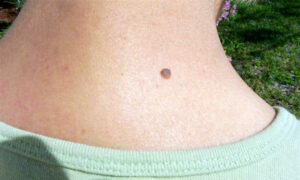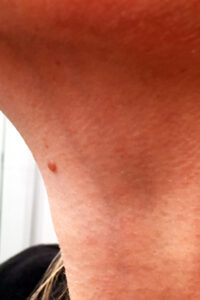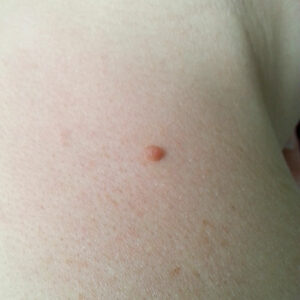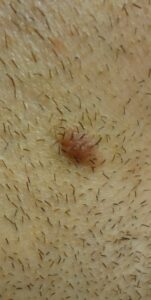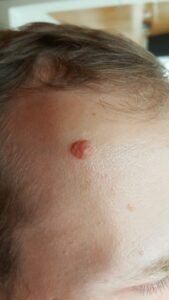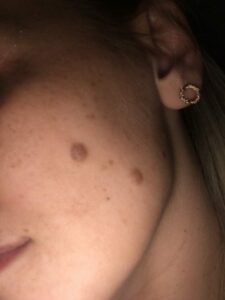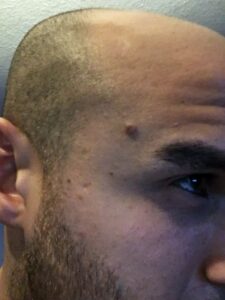Moles
Learn more about which moles should be checked by a doctor (rather than treated with LeaLea) and which are suitable for removal with LeaLea cream.
What is a Mole?
Moles are also called nevi. They are common skin blemishes that occur in different layers of the skin. Many people think of moles as a dark brown spot. In reality, they have a wide spectrum of appearance.
Sometimes moles on women’s cheeks are perceived as modern and even referred to as “beauty spots”. However, not all are so beautiful. Moles can be very unsightly, for example if they protrude. Dark hair can sprout out, or a tumor may develop!
Moles can occur anywhere on the skin. They are usually brown, of various sizes and may have different shapes.
Most moles occur during the first 20 years of life, although some appear later in life Intense sunbathing can darken existing moles and increase their number.
Types of Moles
- Connected moles are usually brown and flat or slightly raised.
- Composite moles, are slightly elevated, range in color from flesh-colored to dark brown, and include pigment-producing cells (melanocytes) in both the upper and lower layers of the skin (epidermis and dermis).
- Skin blemishes, ranging from flesh-colored to brown are elevated, most commonly on the upper half of the body and may contain hair.
- Sebaceous moles are produced by overactive sebaceous glands. These are yellow and rough-grained.
- Blue molesare slightly raised, stained by pigments deep in the skin and most commonly occur on the head, neck and arm.
Risks of Moles
- Moles are the most common tumor in humans.
- Each person has about 15-20 moles.
- Moles occur in different morphological types.
- Moles can develop into melanoma a malignant skin cancer.
- A “regrowth” of moles is typical in melanoma!
These 3 types of moles are most likely to develop into a malignant tumor!
1. Atypical moles
Atypical moles (dysplastic nevi) can become malignant melanoma, a potentially deadly form of skin cancer. These are usually hereditary. Most are larger than a pencil eraser, shape and pigmentation are irregular.
2. Congenital moles
Congenital moles which are present from birth are more likely to cause cancer than those that develop later.
3. Maligna Lentigo
Maligna Lentigo, which occurs most commonly in the face and after 50, first appears as a shallow point containing two or more skin-colored tints. It gradually gets bigger and darker. It gradually gets bigger and darker.
Warning Signs to Look Out For:
- spontaneous ulceration or bleeding
- pain and itching
- congenital or very large nevi, birthmarks or moles
- changes in shape and size
- unexplained, inflammatory changes
- Compound moles
Birthmarks/moles suggesting a suspected cancer should be examined by a doctor and a laboratory or biopsied.
Blemishs Not Suited to Treatment with LeaLea
LeaLea should not be used on birthmarks and moles that are larger than 2 cm and are very dark, almost black. LeaLea should not be used for seborrheic keratoses / old warts, blood sponges, fire marks or wolf marks. In all cases, consult with a trusted physican or dermatologist before using LeaLea.
Here you will find an overview in detail:
Not suitable: Seborrheic Keratoses and Age Warts
Please note: Sometimes seborrheic keratoses are confused with moles or birthmarks. LeaLea is NOT suitable for the removal of seborrheic keratoses. This type of skin change are unlikely to be permanently removed.
Seborrheic keratoses (SK) are the most common skin lesions. Although the exact cause of SK is unknown, they tend to develop in areas exposed to the sun, especially in the elderly. Some patients can develop dozens of them, most commonly on the face, neck, and torso. Typically, SKs have sharp boundaries, a brown-black color and a “stuck on” or wart-like and smooth appearance. Occasionally the surface may flake, especially if it has become irritated. Irritated or irregularly shaped SKs can be mistaken for skin cancer or melanoma. Because they are entirely superficial, they can be removed by a variety of procedures with little or no scarring.
Not Suitable: Blood Sponges
Blood sponges, or (cavernous hemangiomas) often appear as raised reddish blemishes. They consist of dilated blood vessels, are often congenital or develop in the first few weeks of life, but they are neither hereditary nor contagious. They are among the most common benign growths. Blood sponges can form anywhere where blood vessels appear. LeaLea is NOT suitable for use on blood sponges, as there is an increased risk of inflammation. Other treatments are better suited for removing these types of tumors.
Not Suitable: Purgative or Fire Marks
A fire mark is a benign skin lesion with reddish to red-purple color. It is a congenital malformation of blood vessels in the skin, which are become thicker and darker over time and can form small nodules. LeaLea is NOT suitable for use on fire marks, as there is an increased risk of inflammation.
Not Applicable: Black Moles
Black birthmarks and moles should definitely be examined by a dermatologist, because the color indicates a likely malignant mole. LeaLea is therefore NOT suitable for use on black moles or moles with black parts.
Not Suitable: Moles Larger Than 2 cm
Should more than 20 birthmarks or moles in one place or r moles / moles that are too large (larger than 2 cm) occur at you, then guess so do we from treatment with LeaLea cream. The risk of treatment increases too drastically, but not only when using LeaLea cream, but also with other common treatment methods. If it is a benign skin lesion, we would recommend that you do not treat the birthmark or mole in any way.
On which moles can LeaLea be used?
LeaLea is generally suitable for use with the following benign moles and moles:
- light or darker, if not black
- pink, light brown or dark brown
- small or large
- flat or raised
- shaped or misshapen
- on legs, with or without body hair
- on arms, with or without body hair
- on the back
- on the stomach
- on neck
- on the face including in the eyebrows or on the nose
- on the scalp
Light or Pink Moles
Brown or Dark Moles
Small or Flat Moles
Large or Raised Moles (Smaller than 3/4 Inch or 2 CM)
Misshapen Moles
Moles on the Neck
Moles in the Beard
Moles on the Face or Forehead
If you want to perform a removal on the face or on the head, some application experience is an advantage. We recommend that you do NOT apply it to the face for the first time, but instead treat another mole or mole on the arms, legs, stomach or back. This will give you confidence in the application and see whether you are satisfied with the results. Only when everything has gone to your satisfaction and you feel confident in handling the LeaLea cream, apply it to your face.
